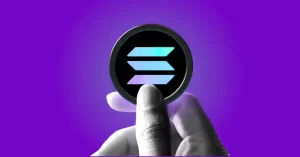We do the research, you get the alpha!
Get exclusive reports and access to key insights on airdrops, NFTs, and more! Subscribe now to Alpha Reports and up your game!
Go to Alpha Reports
Bitcoin’s new Runes fungible token standard launched late Friday alongside the quadrennial halving event, and the immediate demand pushed network fees to a level never before seen on the original blockchain network. Already, at least one centralized exchange (or CEX) has already taken notice and gotten in on the action.
The Cayman Islands-based exchange Gate.io has already listed three of the earliest Runes tokens on Bitcoin: SATOSHI•NAKAMOTO (no connection to the pseudonymous Bitcoin creator), MEME•ECONOMICS, and WANKO•MANKO•RUNES.
WANKO•MANKO•RUNES is the odd token out there, but the other two tokens have something in common besides the odd naming scheme with the interpunct between words (due to protocol naming conventions): They’re among the first 10 tokens etched via the Runes protocol.
There was a mad rush to launch Runes tokens on Friday when the protocol went live, so much so that it helped push Bitcoin network fees on the first several post-halving blocks into the millions of dollars combined.
Why? As some creators told Decrypt last week, snatching one of those early slots would lend the project provenance and possibly make it seem more appealing (and valuable) to traders. After all, this same pattern played out with the NFT-like Ordinals on Bitcoin last year, with early inscription numbers fetching large sums of money on secondary marketplaces.
It could also lend some credibility to these tokens, alongside the ample buzz that propelled those projects to mint out rapidly after launch, and the funding that enabled them to pay the sizable network fees right out the gate. That could be playing a role in which Runes tokens that centralized exchanges are eager to add to their listings.
There’s speculation across social media that those first 10 Runes tokens—some of which haven’t actually been deployed yet—are the biggest targets for being listed on exchanges. That said, WANKO•MANKO•RUNES has already bucked the trend, perhaps because it’s built up some hype for being inspired by a story written by Runes protocol creator Casey Rodarmor.
Other notable Runes tokens minted to the Bitcoin blockchain in that first set of 10 projects include Rodarmor’s own uncapped UNCOMMON•GOODS (with an endless supply), the soon-to-be-airdropped DOG•GO•TO•THE•MOON tied to the Runestone Ordinals project, and RSIC•GENESIS•RUNE, also tied to an airdropped Ordinals collection, RSIC.
Centralized exchanges have a way of helping to legitimize assets, elevating them from the “degen” side of the crypto world and potentially putting them in front of many more eyes. Such exchanges are mainstream platforms that require ID and details about their customers, as opposed to decentralized exchanges, where anyone can buy and sell tokens.
The biggest players like Coinbase and Binance are centralized platforms—and a weekend tweet from Binance, interestingly, is being taken by some traders as a sign of interest from the exchange in Runes.
That’s purely speculation for now, but Binance has supported Bitcoin-based BRC-20 tokens. And centralized exchange OKX is dabbling in Runes via its “Web3 marketplace,” which enables peer-to-peer trading, but its core CEX has yet to list any Runes tokens.
Gate.io in particular has a habit of making it to the hottest new thing in the digital asset space. Last year, the exchange was the first to list ORDI, the first and ultimately biggest BRC-20 token in the space. Binance, OKX, and other centralized exchanges now list ORDI, and it’s one of the top 100 most valuable cryptocurrencies overall by market cap. Will it again be a frontier pioneer on Runes, leading the charge that other exchanges will eventually follow?
Runes is a new standard for creating tokens on the Bitcoin blockchain. The protocol comes from the creator of Ordinals—another craze which took off last year, allowing people to mint NFT-like assets on the Bitcoin blockchain.
Runes are different from Ordinals, however, as rather than unique assets, the protocol allows people to mint tokens that aren’t unique like NFTs but can be exchanged. Think major networks like Ethereum and Solana, which host new cryptocurrencies that spring into existence each and every day.
With Runes, the idea is that the same can be done upon the biggest and oldest crypto network. Last year’s experimental BRC-20 standard did much the same thing, but Runes is said to be a more efficient implementation—and some Bitcoiners believe it will have even broader appeal. That could prove true if more centralized exchanges embrace Runes soon.
Edited by Guillermo Jimenez
Stay on top of crypto news, get daily updates in your inbox.














